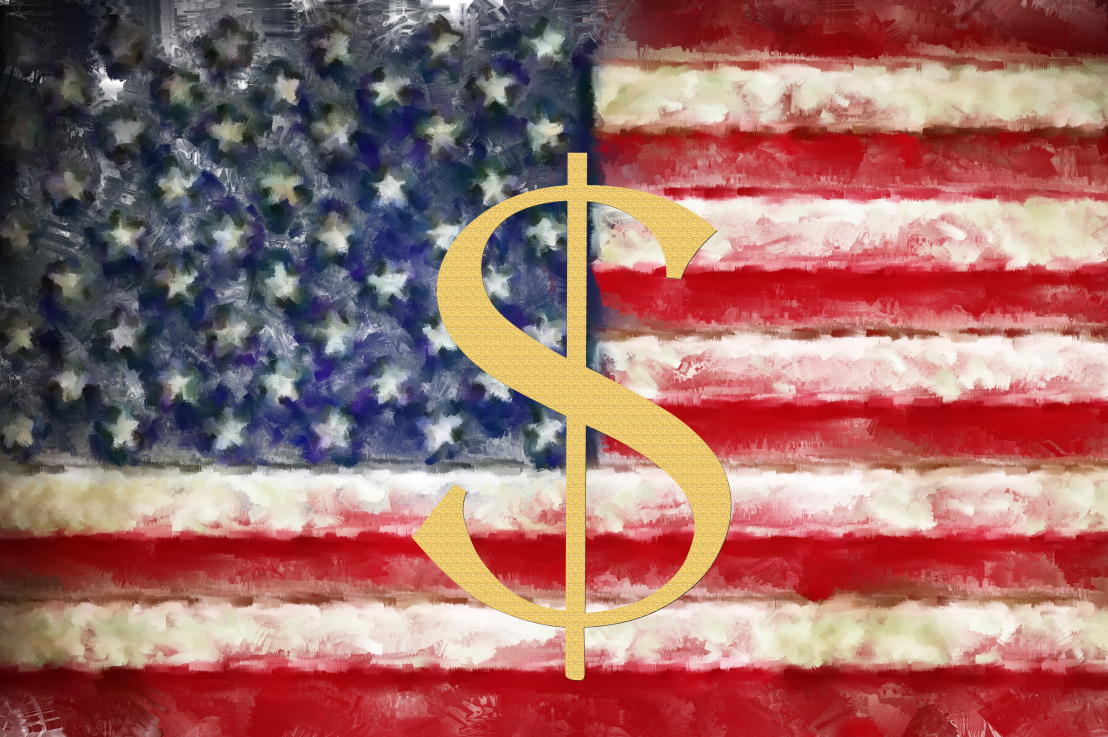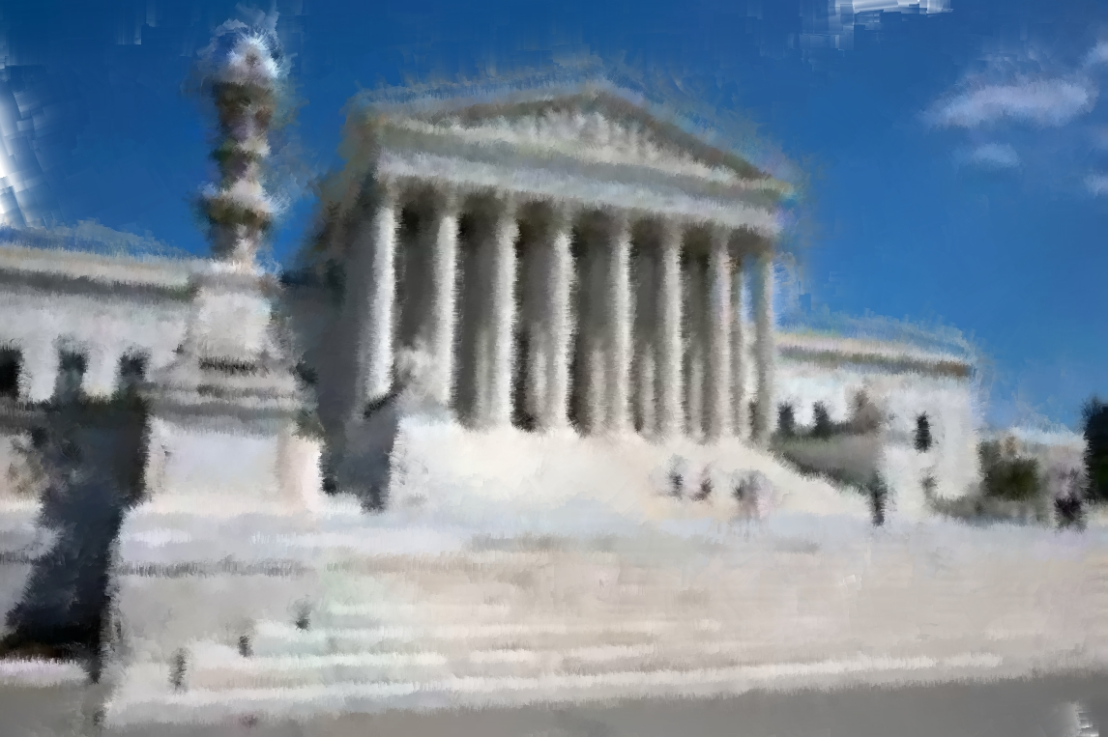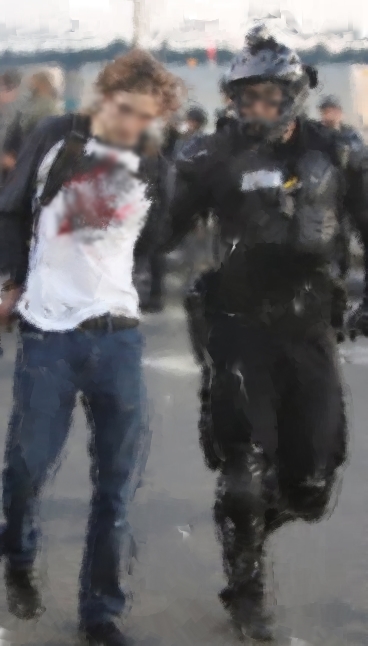Note: the painting above (from 2017) does not show events from January 6, 2021, at the U.S. Capitol. Instead, it depicts events from 2017, which saw a series of violent “May Day” public protests in Portland, Oregon, Seattle and other Pacific Northwestern cities against President Donald Trump. Oregon Public Broadcasting has described Portland as a “testing ground” for the 2021 “J6” demonstrations. Portland has a broad history of violent demonstrations that attacked public institutions.
An increasing amount of rhetoric seeks to portray those who entered the U.S. Capitol on January 6, 2021, as “patriots” exercising their First Amendment rights. Cong. Elise Stefanik, for example, described those who were imprisoned for “J6” activities as “hostages.” Now, a well-respected senior judge who has presided over dozens of J6 cases, including the “QA shaman,” has called such claims “preposterous,” and explained his view that the First Amendment does not protect the J6 sort of illegal activity. See, e.g., United States v. Hansen, No. 22-179, Supreme Court of the United States, June 23, 2023 (law criminalizing encouragement of illegal immigration does not violate the First Amendment). He also took the unusual step of decrying as “preposterous” many of the First Amendment claims being made about the events of J6.
Senior U.S. District Judge Royce Lamberth was nominated by President Ronald Reagan and confirmed to the District Court for the District of Columbia in 1987. He was a Captain in the U.S. Army, serving in Vietnam, and served in the U.S. Attorney’s office in D.C., including as the chief of the Civil Division. He was the Chief Judge of the District Court from 2008 to 2013. Since taking senior status (working retirement as a judge) in 2013, he now often also sits as a visiting judge on the U.S. District Court for the Western District of Texas in his hometown San Antonio. He is the longest-serving judge on the D.C. District Court, and has presided over dozens of trials and cases arising out of the January 6, 2021, riot at the U.S. Capitol.
His most recent decision was to resentence James Little, who had entered the Capitol on January 6 and pleaded guilty to “parading, demonstrating or picketing in a Capitol building,” in violation of 40 U.S.C. 5104(e)(2)(G). Little was sentenced to both prison and probation, but he failed to abide by the terms of the probation. Lamberth’s recent opinion was to explain his decision not to give Little full credit for serving 18 months of his probation because he failed to fulfill the probation agreement. Judge Lamberth wrote:
The Court is accustomed to defendants who refuse to accept that they did anything wrong. But in my thirty-seven years on the bench, I cannot recall a time when such meritless justifications of criminal activity have gone mainstream. I have been dismayed to see distortions and outright falsehoods seep into the public consciousness. I have been shocked to watch some public figures try to rewrite history, claiming rioters behaved “in an orderly fashion” like ordinary tourists, or martyrizing convicted January 6 defendants as “political prisoners” or even, incredibly, “hostages.” That is all preposterous. But the Court fears that such destructive, misguided rhetoric could presage further danger to our country. The Court cannot condone the shameless attempts by Mr. Little or anyone else to misinterpret or misrepresent what happened. It cannot condone the notion that those who broke the law on January 6 did nothing wrong, or that those duly convicted with all the safeguards of the United States Constitution, including a right to trial by jury in felony cases, are political prisoners or hostages.
So let me set the record straight based on what I’ve learned presiding over many January 6 prosecutions, hearing from dozens of witnesses, watching hundreds of hours of video footage, and reading thousands of pages of evidence. On January 6, 2021, a mob of people invaded and occupied the United States Capitol, using force to interrupt the peaceful transfer of power mandated by the Constitution and our republican heritage.
This was not a protest that got out of hand. It was a riot; in many respects a coordinated riot, as is clear from cases before me including Hostetter (21-cr-392) and Worrell (21-cr-292). “Protestors” would have simply shared their views on the election—as did thousands that day who did not approach the Capitol. But those who breached and occupied the Capitol building and grounds halted the counting of the Electoral College votes required by the Twelfth Amendment. The rioters interfered with a necessary step in the constitutional process, disrupted the lawful transfer of power, and thus jeopardized the American constitutional order. Although the rioters failed in their ultimate goal, their actions nonetheless resulted in the deaths of multiple people, injury to over 140 members of law enforcement, and lasting trauma for our entire nation. This was not patriotism; it was the antithesis of patriotism.
And the rioters achieved this result through force. Not everyone present that day was violent, but violence is what let them into the Capitol. At first, a police line protected the Capitol, but eventually law enforcement was subjected to such force by such a mass of people that the rioters pushed through. Upon entering the Capitol, many rioters vandalized and looted, some hunted for members of Congress. … What the Court already said in reference to Mr. Little at his original sentencing remains true:
January 6, 2021, marked a tragic day in American history. The peaceful transfer of power—one of our most important and sacred democratic processes—came under a full-fledged assault. While the immediate threat may have subsided, the damage from January 6 persists. Rioters interrupted the certification of the 2020 Electoral College vote count, injured more than one hundred law enforcement officers, and caused more than a million dollars of property damage to the U.S. Capitol. Some of the rioters—now defendants in criminal cases—directly contributed to this violence by assaulting members of law enforcement or by planning, preparing, and facilitating this violence. Others, like Little here, did not directly assault officers.
But even Little and those who engaged in this “lesser” criminal conduct were an essential component to the harm. Law-enforcement officers were overwhelmed by the sheer swath of criminality. And those who engaged in violence that day were able to do so because they found safety in numbers.
United States v. Little, 590 F. Supp. 3d 340, 342 (D.D.C. Mar. 14, 2022), vacated and remanded, 78 F.4th 453 (D.C. Cir. 2023).
Let me add one more thing. According to the defendant, the criminal justice system has denied him his freedom of speech. Of course, Mr. Little has a right under the First Amendment to believe that the 2020 presidential election was stolen. He has a right to express that view today, and he had a right to do so on January 6th as well. He even has a right to argue that this was a politically motivated prosecution. But the First Amendment does not give anyone the right to enter a restricted area or to engage in riotous activity in the Capitol. In resentencing Mr. Little on the count to which he pleaded guilty, the Court is not suppressing his constitutional right to freedom of expression. For Mr. Little to style himself a political prisoner and to accuse the Court of infringing his rights is not only incorrect, it is offensive to the Court. The public should understand that such notions are preposterous.
This is a matter of right and wrong. Little cannot bring himself to admit that he did the wrong thing, although he came close today. So, it is up to the Court to tell the public the truth: Mr. Little’s actions, and the actions of others who broke the law on January 6th, were wrong. The Court does not expect its remarks to fully stem the tide of falsehoods. But I hope a little truth will go a long way.
United States v. Little, No. 1:31-cr-00315-RCL, Jan. 25, 2024, slip op. at 4-7 (emphases in original).
https://storage.courtlistener.com/recap/gov.uscourts.dcd.230440/gov.uscourts.dcd.230440.73.0.pdf



You must be logged in to post a comment.